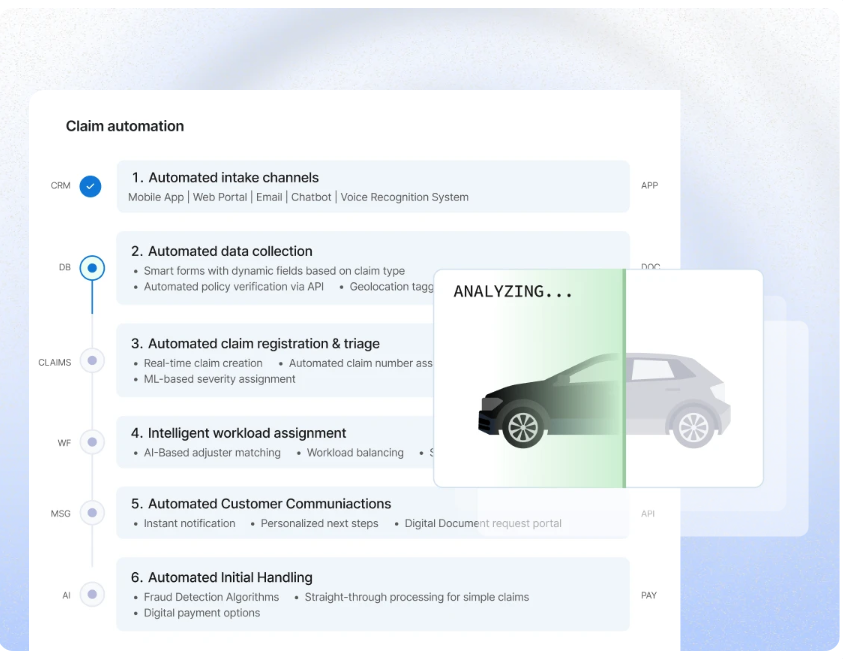So, are you looking forward to know the bad human resources (HR) practices to avoid in 2025?
Well, any company’s foundation is its human resources (HR), particularly in the United Arab Emirates (UAE), where a complicated legal framework, a diversified workforce, and quick economic expansion provide particular difficulties.
Implementing HR software can help businesses navigate these complexities by streamlining processes and ensuring compliance. Choosing the best HR software in UAE, Dubai allows companies to efficiently manage their workforce while adhering to local labor laws.
Because of the diverse workforce in the UAE—more than 200 nationalities work there—HR is especially important for maintaining efficient operations, legal compliance, and a pleasant workplace culture.
But even with HR’s importance, some companies continue to make critical errors that result in unhappy employees, significant employee turnover, and even legal issues.
This post will examine in greater detail 15 typical HR errors made in the United Arab Emirates and offer doable fixes.
Explore the top Human Capital Management (HCM) Softwares to grow your business in 2025
Table of contents
- Top 15 Bad Human Resources Practices to Avoid:
- 1. Ignoring labor laws in the UAE:
- 2. Insufficient Cultural Understanding :
- 3. Ignoring the emirate:
- 4. Subpar Induction Procedures:
- 5. The use of micromanagement:
- 6. Varying HR Guidelines:
- 7. Inadequate Work-Life Coordination:
- 8. Neglecting Final-of-Service Advantages:
- 9. Insufficient Acknowledgment and Compensation:
- 10. Disregarding Employee Input:
- 11. Ignoring safety and health:
- 12. Ambiguous Job Duties and Roles:
- 13. Insufficient Opportunities for Career Development:
- 14. Ineffective Resolution of Conflicts:
- 15. Especially Difficult HR Procedures:
- Conclusion

Top 15 Bad Human Resources Practices to Avoid:
1. Ignoring labor laws in the UAE:
Strict labor rules in the United Arab Emirates regulate several facets of employment, such as working hours, overtime, leave benefits, and end-of-service benefits. If you break these laws, you risk paying huge fines, facing legal action, and losing your reputation.
The issue:
For instance, many businesses make mistakes in when calculating gratuity payments or neglect to provide their employees with the required health insurance, which can have serious legal ramifications.
The Solution:
Attend frequent workshops and training sessions to stay up to date on the most recent modifications to UAE labor legislation.
To automate compliance, such as tracking working hours, leave, and benefits, implement HR software.
To make sure you follow the law, perform routine internal audits. In the long run, this proactive strategy can save money and time.
2. Insufficient Cultural Understanding:
The Issue:
Cultural disparities are unavoidable given the representation of over 200 nationalities in the UAE workforce. Within teams, a lack of knowledge of these distinctions can cause tension, miscommunications, and even confrontations.
For example, arranging meetings during Ramadan without taking into account the employees who are fasting can cause pain and bad morale.
The Solution:
To guarantee that managers and HR personnel are aware of the various cultural demands in the workplace, offer cultural sensitivity training.
Celebrate significant religious and cultural holidays, like Christmas, Diwali, and Ramadan, to promote inclusiveness.
Establish HR regulations that honor and take into account various religious customs, such as allowing for flexible work schedules on holy days.
3. Ignoring the emirate:
The Issue:
The effort by the UAE government to incorporate Emiratis into the commercial sector is known as “Emiratization.” Ignoring this requirement may result in fines for non-compliance as well as lost chances for government contracts.
The Fix:
Incorporate Emiratization objectives into your hiring process and aggressively pursue Emirati applicants.
Provide Emirati workers with specialized career advancement programs to support their personal and professional development.
Collaborate with academic institutions and government initiatives to meet Emiratization goals and draw in young Emirati talent.
4. Subpar Induction Procedures:
The Issue:
Ineffective or insufficient onboarding procedures can make new hires feel disoriented, unproductive, and disengaged. The onboarding process in the United Arab Emirates (UAE), where a large number of employees are foreigners, must take into account the practical and cultural aspects of living and working in a foreign nation.
The Solution:
Create a comprehensive onboarding program that covers company policies in addition to an overview of the work culture, laws, and way of life in the United Arab Emirates.
Offer mentorship programs to assist foreign nationals in acclimating to UAE life.
Get new hires’ opinions on the onboarding process on a regular basis, and adjust the process as needed.
5. The use of micromanagement:
The Issue:
Micromanaging staff members can lower morale, hinder innovation, and decrease production. This is especially troublesome in the United Arab Emirates, since a diverse workforce may consist of people accustomed to varying degrees of autonomy at work.
The Solution:
Encourage a culture of trust by establishing specific objectives and giving staff members the tools they require to be successful without continual supervision.
Teach managers how to empower their teams by fostering autonomous problem-solving and assigning assignments correctly.
Instead of watching over your staff, use routine check-ins to provide direction and support.
6. Varying HR Guidelines:
The issue:
Improper implementation of HR policies may give rise to accusations of partiality, injustice, and even legal disputes. For instance, providing certain employees with flexible working hours while excluding others without a clear policy in place can lead to discontent and animosity.
The Answer:
Create precise, well-documented HR guidelines that are applicable to all staff members, regardless of position or department.
To guarantee that these rules are applied uniformly throughout the company, managers should get training on them.
Make that HR policies are current, relevant, and consistent with business principles and UAE labor regulations by reviewing and updating them on a regular basis.
7. Inadequate Work-Life Coordination:
The Issue:
In the UAE, where long hours are frequently required in sectors like retail and construction, a poor work-life balance can result in significant employee turnover, burnout, and disengagement. Expecting workers to put in extra hours without paying them appropriately might lead to unhappy workers and legal problems.
The Answer:
Whenever feasible, implement flexible work arrangements like remote work or staggered hours.
Encourage staff members to take advantage of their entire leave entitlement, and make sure supervisors support a sensible work-life balance.
Encourage wellness initiatives to assist staff in maintaining their wellbeing, such as stress management classes and mental health support.
8. Neglecting Final-of-Service Advantages:
The issue:
In the UAE, gratuity at the conclusion of service are required by law; nevertheless, failing to pay them or calculating them incorrectly can result in expensive lawsuits. Accurately calculating gratuities is a challenge for many organizations, particularly when complex elements like unpaid leave or partial-year work are involved.
The Fix:
Use HR software to automate gratuity computations, guaranteeing accuracy and adherence to UAE regulations.
To ensure that gratuities are paid correctly, keep accurate records of employee tenure, pay history, and leaves taken.
Keep yourself updated on any modifications to end-of-service benefit laws, and modify your procedures as necessary.
9. Insufficient Acknowledgment and Compensation:
The Issue:
Neglecting to recognize the hard work of employees can result in low morale, disengagement, and increased staff turnover. Workers who don’t feel valued are more inclined to quit for organizations that provide greater incentives and recognition.
The Solution:
Put in place organized recognition systems that provide non-cash and monetary incentives, including performance bonuses, extra time off, or public recognition.
To encourage an attitude of gratitude, publicly recognize both minor and major accomplishments on a frequent basis.
Encourage staff members to recognize and celebrate each other’s accomplishments by implementing peer-to-peer recognition programs.
10. Disregarding Employee Input:
The Issue:
A lot of UAE-based businesses ignore employee input, either by failing to ask for it or by doing nothing with it. Unresolved problems, a decline in engagement, and greater turnover rates might result from this.
The Solution:
To offer workers a voice, do frequent staff surveys, feedback meetings, and anonymous suggestion boxes.
Respond to employee input and share any modifications or enhancements that follow.
Managers and staff should have regular one-on-one meetings to talk about issues, career objectives, and ideas for enhancement.
11. Ignoring safety and health:
The Issue:
Regulations pertaining to health and safety are essential, particularly in sectors like manufacturing, hospitality, and construction. Disregarding these rules may lead to mishaps at work, legal repercussions, and harm to one’s reputation.
The Solution:
Conduct frequent audits and training sessions to guarantee strict adherence to UAE health and safety requirements.
Provide workers with the appropriate safety gear and ensure that it is worn at all times.
Foster an environment of internal safety by empowering staff members to disclose risks and near-misses without worrying about facing consequences.
12. Ambiguous Job Duties and Roles:
The Issue:
Lack of clarity in job descriptions can cause misunderstandings, annoyance, and decreased output. Workers who are unclear of their duties may cross lines or fail to complete important jobs.
The Answer:
Write precise, in-depth job descriptions that specify each worker’s duties, lines of reporting, and expectations.
Make sure job roles are updated to match the demands of the organization and the skills of the workforce on a regular basis.
Conduct regular performance reviews to make expectations clear and offer input on how staff members are carrying out their jobs.
13. Insufficient Opportunities for Career Development:
The Issue:
Aspiring employees look for chances for job advancement in a cutthroat environment like the United Arab Emirates. When such chances aren’t offered, workers may get disengaged and experience higher turnover as they look for better options elsewhere.
The Answer:
Create individual development plans (IDPs) for every employee, detailing the objectives of their career and the measures required to reach them.
Provide staff with opportunities for upskilling, certifications, and training to keep them motivated and advancing within the organization.
Create distinct career trajectories and let staff members know about them during performance evaluations.
14. Ineffective Resolution of Conflicts:
The Issue:
Any workplace will inevitably experience conflicts, but if they are not resolved quickly and skillfully, a poisonous work atmosphere may result. Unresolved disputes may result in a drop in output, a rise in Lack of attendance, or even the departure of important personnel.
The Resolution:
Educate managers on methods of resolving conflicts, including negotiation, mediation, and active listening.
Provide a structured conflict resolution process that staff members can use to report and settle conflicts.
As soon as a disagreement emerges, resolve it amicably, making sure that all sides are heard.
15. Especially Difficult HR Procedures:
The Issue:
HR procedures that are overly bureaucratic for things like leave requests and cost claims can irritate workers and lower output. Complicated processes frequently lead to mistakes, hold-ups, and unhappy workers.
The Solution:
Simplify HR procedures by getting rid of pointless steps and, if at all possible, digitizing forms.
Provide employee-friendly HR administration tools that make it simple and quick for staff members to do routine chores like making leave requests and expenditure reports.
Employees should receive instruction on how to use these procedures as well as clear rules.

Conclusion:
In the United Arab Emirates, fostering a happy and successful workplace requires effective HR management. Implementing HR software can streamline HR processes, improve employee engagement, and enhance overall efficiency.
Choosing the best HR software in UAE, Dubai ensures compliance with labor laws while optimizing workforce management.
Businesses may improve employee satisfaction, lower attrition, and guarantee local legal compliance by steering clear of these typical HR blunders.
Maintaining a competitive edge in luring and keeping top people in the UAE requires being up to date on changes in labor legislation and best HR practices.








